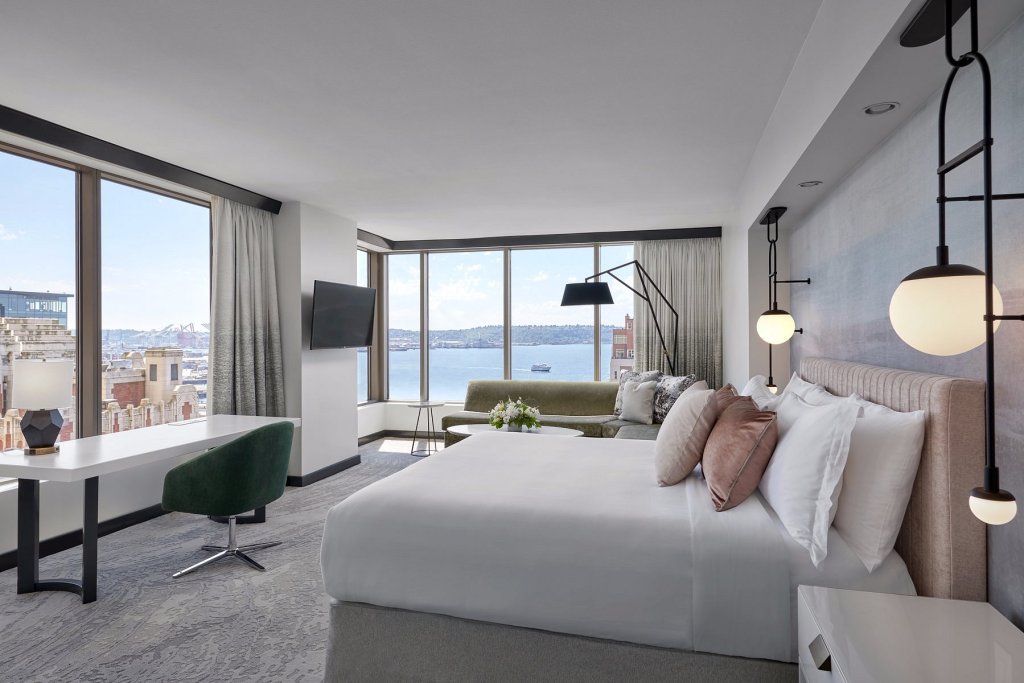Historically, AC in Europe hasn’t been par for the course.
In fact, it’s one of the more pressing topics that Americans flying across the Atlantic in summer think about.
Will their hotel or rental have AC? What about cafes and restaurants? And is there a straightforward list of European countries without AC?
Unfortunately, there’s no easy answer.
Traditionally, Europeans have foregone AC in their residences and in many commercial spaces, from offices to shops to bars. But rising temperatures across the Mediterranean and summer heat waves that last more than a week have changed the game.
Today, even Europeans who grew up without AC are grappling with heat exhaustion and sickness, meaning the number of European countries without AC is lessening.
Still, while many of Europe’s formerly no-AC zones are starting to adopt cooling technology, the process is slow. According to one source from 2018, there are around 20 AC units per 1,000 inhabitants across Europe. That’s still a pretty low number compared to other regions, and especially the US.
If you’re looking for reliable information about European countries without air conditioning, start here. These are the most popular destinations where you may or may not find AC. Plan accordingly.
Popular European countries without air conditioning and high heat

First, I’m covering countries without air conditioning across the board that regularly have temperatures in the 80s, 90s, and even 100s. (Looking at you, Greece and Spain!)
Croatia
Croatia is a newer tourist hotspot compared to the other Mediterranean countries on this list, but it’s been quick to adopt AC. You’ll find it in the vast majority of rentals, homes, restaurants, and more. That being said, Croatia also has many establishments that are partly in open air, making the coastal cities and towns more accommodating for heat in general.
Greece
Given its reliance on tourism and its steadily rising average temperatures, many locations in Greece that are open to visitors have AC. That includes private rentals and hotels, along with hospitality-facing spots like museums, restaurants, and clubs. Just make sure to look for reviews on how well the unit works if you’re paying for a private rental.
Italy
Compared to Greece and Spain, Italy has been a bit slower to adopt AC units. The vast majority of hotels have them, but not all private rentals come with units. Check the reviews to look at whether the AC unit worked and how well. Similar to Spain, you’ll notice more establishments have them in the south and around the coast. In areas further north, like Veneto and Lombardy, they aren’t yet standardized.
Portugal
Similar to Italy, Portugal has been a bit slower to adopt AC. However, you can usually rely on tourist establishments to offer solid AC, especially inland and further down south. That being said, not all units are as powerful as what we’re used to in the United States. If you’re heading off the beaten track, plan to skip out on AC.
Spain
Spain relies heavily on tourism, meaning the vast majority of rentals, hotels, and shops that are hospitality-facing likely have AC. That’s particularly true in southern and coastal areas. However, if you’re heading to the north (like Basque Country or the Pyrenees), don’t expect to have AC in every private rental, restaurant, or hotel. In short, it’s used where needed, but usually only where temperatures hover above 85.
Popular European countries without air conditioning and lower temperatures

Wondering what countries don’t have AC when you may or may not need it? These European countries don’t have many AC units, but it’s less likely to be a problem.
France
Heat waves in France have surged over the last decade, causing a sharp uptick in AC purchases. However, most are in residences compared to hotels and private rentals. If you’re visiting France in the summertime, you need to ask your hotel or hosts whether you can rely on AC. Remember that it’s still new to the country, meaning some rentals that have it might not make it available to you unless they feel its actually hot enough to warrant usage.
Germany
Germany skimps big time on AC thanks to many buildings having natural ventilation and the country’s historically low temperatures. That’s changing slightly thanks to rising temperatures, but the vast majority of hotels and private rentals come with heating—not cooling.
Netherlands
The Netherlands has even fewer AC units than in Germany, thanks to its low average temperatures. Don’t expect to have AC in your private rental or hotel, in many cases.
United Kingdom
Some newer buildings might have AC, but the vast majority of homes and commercial shops in the UK don’t have units. It’s uncommon in residential settings, along with hotels and private rentals. It shouldn’t be a problem thanks to the UK’s low temperatures, aside from those increasingly common summer heatwaves.













